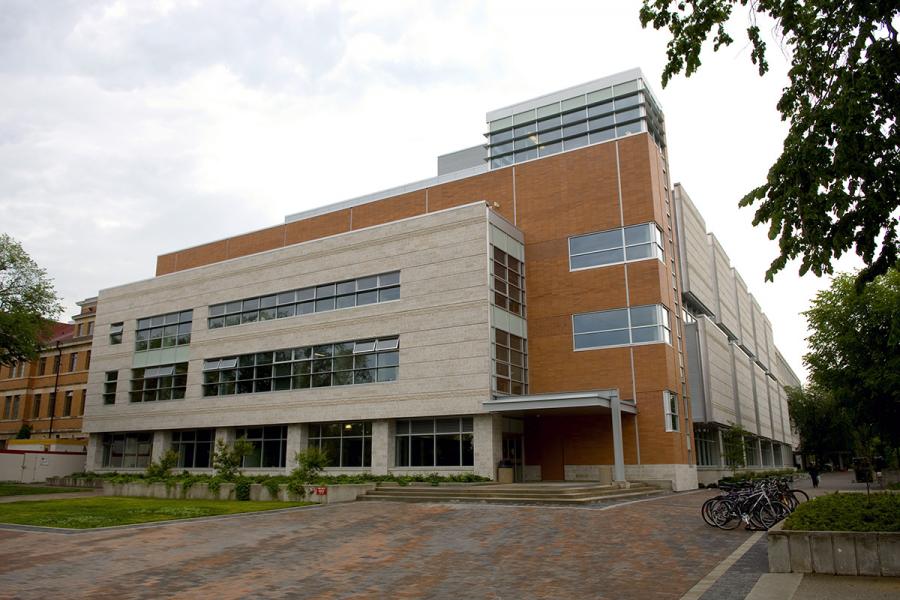Professor
Department of Electrical and Computer Engineering
Room E1-530 EITC
University of Manitoba (Fort Garry campus)
Winnipeg, MB R3T 5V6
The University of Manitoba campuses and research spaces are located on original lands of Anishinaabeg, Ininiwak, Anisininewuk, Dakota Oyate, Dene and Inuit, and on the National Homeland of the Red River Métis. More
University of Manitoba
Winnipeg, Manitoba Canada, R3T 2N2

Professor
Department of Electrical and Computer Engineering
Room E1-530 EITC
University of Manitoba (Fort Garry campus)
Winnipeg, MB R3T 5V6
Computational proximity, topology of cell complexes,, digital topology and geometry, signal detection, measurement and analysis, applied mathematics, moving object detection in videos and various applications areas such as video barcodes, persistence, discrete and continuous time analysis in engineering systems.
Computer Vision,, Computational Topology, Digital Topology, Machine Learning, Engineering, Applied and Computational Mathematics.
My research focuses on establishing frameworks for the study of the closeness of signals and structures on triangulated finite bounded surface regions on planar and curved surfaces in a space K endowed with an adjacency or spatial or descriptive proximity relation. Regions E in K are strongly close, provided the interiors of E overlap or have matching descriptions. In Alexandroff-Hopf-Whitehead CW (Closure finite Weak) complexes on K, e.g., this leads to the discovery of proximal sub-complexes and proximal nerve structures that are close to each other either spatially or descriptively. Of particular interest is the detection, characterization, analysis, measurement, rate of change, energy, and classification of shapes of nesting, non-overlapping skeletal vortexes, forming what are known as optical vortex nerves.
Asst. Prof., University of Arkansas, 1991-1994, and Researcher, Jet Propulsion Laboratory/Caltech, Pasadena, California (1991-1994), Full Professor, ECE Department, University of Manitoba, 1995-present, Visiting Professor, Mathematics Department, Adiyaman University, Adiyaman, Turkey, 2014-present, Visiting Researcher, Universit` a degli Studi di Salerno, Department of Mathematics DIPMAT Fisciano, Italy, 2014-present. He is the author of
Topology with Applications. Topological Spaces Near and Far, World Scientific, 2013 (with S.A. Naimpally) ,
Topology of Digital Images. Visual Pattern Discovery in Proximity Spaces, Springer, 2014,
Computational Proximity. Excursions in the Topology of Digital Images, Springer, 2016.
Foundations of Computer Vision. Computational Geometry, Visual Image Structures and Object Shape Detectionm, 2017,
Computational Geometry, Topology and Physics of Digital Images with Applications, Shape Complexes, Optical Vortex Nerves and Proximities, Springer, 2020.
as well as over 700 published articles. He introduced near set theory in 2006, tolerance near sets in 2009, descriptive proximity in 2012, strongly near Wallman proximity in 2014, proximal Vorono" i and Delaunay tessellations in 2015, path triangulation in 2020, His main research interests are computational proximity, digital topology and geometry, signals, applied mathematics, object detection and signal analysis and various applications areas such as digital images.
Professor James is currently seeking graduate students. Please contact him for more information.
J.F. Peters, R. Alfano, P. Smith and A. Tozzi, Discrete and continuous curved surface antipodal paths. Extensions of the Borsuk-Ulam Theorem and application of the Feynman Path Integral and Woodhouse Contour Integral, preprint, 2022
E. Cui, J.F. Peters, Self-similarities in optical flows Voxel lumens flux fractality in moving shapes in triangulated video frames, CSF 2022
J.F. Peters, Path Triangulation, Cycles and Good Covers on Planar Cell Complexes. Extension of J.H.C. Whitehead's Homotopy System Geometric Realization and E.C. Zeeman's Collapsible Cone Theorems, BAMS, 2022
J.F. Peters, Temporal Proximity of 1-cycles in CW Spaces. Time-Varying Cell Complexes, JCMA 2021.
A, Srimal, J.F. Peters. S. Ramanna, Persistence Barcoded Vehicular Traffic Videos in a Topology of Data Approach to Shape Tracking, chapter, 2021.
J.F. Peters, Amiable and Almost Amiable Fixed Sets. Extension of the Brouwer Fixed Point Theorem, BAMS, 2020.
J.F. Peters, Descriptive Fixed Set Properties for Ribbon Complexes, preprint, 2020.
J.F. Peters, Ribbon complexes & their approximate descriptive proximities. Ribbon & vortex nerves, Betti numbers and planar divisions, BAMS, 2019.
J.F. Peters,, H. Dutta, Equivalence of Planar Cech Nerves and Complexes, NASC, 2019.
A, Worsley, J.F. Peters, Enhanced Derivation of the Electron Magnetic Moment Anomaly from the Electron Charge using Geometric Principles, APR, 2018.
MZ. Ahmad, J.F. Peters, Maximal Centroidal Vortices in Triangulations. A Descriptive Proximity Framework in Analyzing Object Shapes, TAMSC, 2018